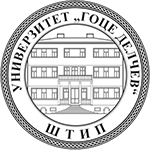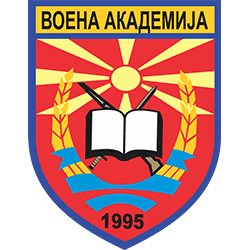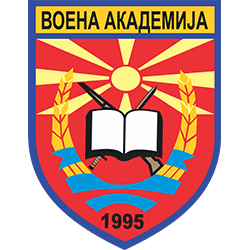
Description
Recently a lot of projects (including EU projects) have been started in computer-based forest fires early detection and monitoring, and are usually implemented in areas of particular importance (National Parks).
However, forest fires still present one of the main risks, and its detection in early phase remains one of the biggest challenge for researchers and institutions in Crisis Management Systems in Europe.
The project will develop a novel model of information systems for early detection, monitoring and prediction of forest fires in areas of particular importance, providing high fire danger forecast and prediction.
The goal of the project is to develop advanced concepts for early detection systems of forest fires that integrates sensor networks and mobile (drone) technologies for data collection and acquisition of those data at existing Crisis Management Information Systems (CMIS).
The mobile (drone) technologies will allow covering much larger areas in order to raise the percentage of forest fires detections in an area of particular importance, to monitor an area with high fire weather index, and to monitor areas already affected by forest fires.
Furthermore, our project will calculate the probability of forest fires in certain areas and will allow its integration in existing European CMIS.
Although initially implemented in our testbed in Macedonia and in our end-users Bulgarian Ministry of Interior and German Bundesministerium das Innern, our system will be open and available to all European countries.
This system will help all CMIS in Europe to develop and to implement different methodologies for initial stage warning, localization and organization of the firefighting teams and tactics to suppress the disaster.
Existed monitoring system of forest fires have the disadvantage of relatively low percentage of detecting of forest fires (between 23.5% – 30%). In our opinion, the main reason for this is that existing stationary systems cannot cover all areas of interest, especially in those where Fire Weather Index (FWI) is very high or the FWI is changing and Hot Spots may appear on a different area.
The here proposed system based on mobile devices (drones) can solve this problem.
| Title: |
„ASPires“ (Advanced Systems for Prevention and early detection of forest fires) |
| Head: | M.Sc. Nikola Kletnikov
Dr. Jugoslav Achkoski, Assistant Professor |
| Type: | Research and development |
| Duration: | May 2017 – April 2019 |
| Finance: | International project funded
EC-European Civil Protection and Humanitarian Aid |
| Budget (total): | 622.142,00 € |
| Budget (Macedonia): | 164.141,00 € |
| Partners: |
|
| Members of the MA team: | Dr. Orce Popovski, PhD |
| Dr, Lazar Gjurov, Assistant Professor, MA,UGD | |
| Dr, Nevena Serafimova Assistant Professor, MA,UGD | |
| Nikola Manev young researcher MA,UGD |
Goals
The general objective of the project is to develop advanced concepts of systems for early detection of forest fires that integrates sensor networks and mobile (drone) technologies for data collection, acquisition and analyses, which will be capable to improve the percentage of detecting of forest fires in areas of particular importance, to monitor areas with high and changing fire weather index, hot spots and areas already affected by forest fires, and to predict the behavior of forest fires. The system shares information and exchanges data between authorities, and at all levels of a national Crisis Management System. It improves the coordination mechanisms between local, regional and national authorities, enhanced partnerships between different public authorities and relevant stakeholders such as academia, research institutions, and the private sector, in particular for forest fires prevention in participating beneficiary’s states and eligible third countries.
Furthermore, our system concepts for early detection of forest fires will support open interfaces to existing CMIS in beneficiaries and end-user countries, and make it available for
all European states, and eligible third countries.
The specific objectives of the project are to:
- Develop and test of new modules and advance sensors for detecting and monitoring of forest area of particular importance and integrate modules in existing Forest Fires
- Information Systems, in particular MKFFIS in Macedonia as a test bed.
- Specify and experimental develop of a gateway between the sensor network and edge data network that will support interoperability, standard interfaces, and could be a basic point of heterogeneous network integration.
- Develop delay-tolerant network solutions and gossip protocols for hop-by-hop spreading of urgent sensor data (fire alarms).
- Categorize forest fires according to severity and by the degree of endangering forest areas of particular importance and other area with endemic speeches of threes.
- Provide specification for possible solutions for faster, constant and uninterrupted data flows between different agencies, services, institutions, sectors, and others integrated entities in Crisis Management System, which will significantly improve and support decision making process for fighting against the fires.
- Establish a mechanism for systematic collection of disaster related data by adopting international and European regulations (such as methodologies, guidelines, procedure for cooperation and coordination) to the target area by developing and implementing IT tools for collection, processing and dissemination of data.
- Improve substantially the use of disaster data for Crisis Management by sharing the best practices in cross-sector and cross-boundary risk management (in beneficiary’s countries and other European countries).
- Develop of the integrated system architecture concepts, specification of functionality, standard interfaces and protocols, partial experimental analyses using sensors and mobile device (like a drone), and concept simulations in extreme environment.
- Develop of the scenarios of system testing, verification, validation at different levels.
- Research for cloud technology for processing of huge amount of data and possibility of the use of the cloud computing system and database.
- Specify of cloud services and a way of possible integration to the existing solutions.
Expected results
We will develop, experimentally implement, and test an integrated advanced system for early detection and monitoring of forest fires that integrates sensor networks and mobile (drone) technologies for data collection and acquisition at existing crisis management information systems (CMIS).
This system will help for further development and the implementation of different methodologies for initial stage warning, localization and organization of the firefighting teams and tactics to suppress the disaster and will have the described below impacts.
Expected results of the project short term impact
- Sharing and exchange of data for forest fires between the different levels of prevention, preparedness and rescue agencies, services, and institutions.
- Proper standards for communication with the goal of overcoming the challenges of dependence of the information systems on known and already used technology described, and an information system created and implemented, as a whole, based on structure-oriented architecture.
- Cost reduction of real-time approach for forest fires detection and monitoring in national parks. Automatic processing of information for forest fires establishment and optionally system alert generation.
- Forest fires categorized according to severity and by the degree of endangering forest areas of particular importance and other area with endemic speeches of threes.
- Drone solution and gateway experiments.
- Delay-tolerant network solutions and gossip protocols for hop-by-hop spreading of urgent sensor data (fire alarms) developed.
- Main actors and systems and their possible level of integration to the integrated solution of the project specification.
- Simulation of predicting of forest fires behavior network. End-to-end testing, verification and validation.
- Developed solution will be implemented with the existing tower infrastructure.
- Detection of forest fire is increased and significantly reduce of the false alarms.
- Possibility of management in command various types of barriers, tourniquets, locks and locking mechanisms in the protected or surround area.
- Object tracking option of a fire or intruder.
- Safety standards for communication, controlling access, sharing and dissemination of the data in use.
- Coordination and cooperation of services included in the prevention, preparedness and rescue process improved.
- Achieved results implemented in framework of law.
- Data sharing to Data centers in all across Europe and Non El) countries.
- Developed software and hardware solutions in different parts of the network are validated.
- View how and what to integrate at national and international/ European level.
- Protection of people and properties from forest fires improved and negatives impacts of climate changes reduction.
- Assessment of forest fires is improved. Manpower and technical equipment and management that answer to crisis situations is more appropriate and faster. Functions of CM are improved.
- Capacities for detection of forest fires and monitoring of forest areas of particular importance which are rich with endemic specimens of flora and fauna in real time are developed and damages caused by forest fires in forest areas of particular importance are significantly reduced.
- Received serial data from measurements are in use for improving experiences in detection and monitoring of forest fires and opened for added values.
- All products will be ready for integration on European level and with heterogeneous systems.
Expected results of the project medium term impact
Expected results of the project long-term impact
Added value of the results of this project would be the more appropriate method of monitoring the forest areas of particular importance (such as national parks and other area with endemic speeches of flora and fauna). Development, test and integration of advanced systems for prevention and early detection of forest fires can serve as a model for monitoring of the forest areas of particular importance in other countries/governments and national parks in Europe. Also, other public bodies in Europe responsible for Crisis Management can learn from the project. The developed system will be scalable and component-based and will allow easy integration on many existing systems using standardized interfaces. In this sense, the added value of the project is proof of concepts at European level.
Implementation of this project will increase the need for production of mobile equipment for detecting of forest fires and monitoring of forest area of particular importance and improvement of information systems used for detecting of forest fires. During last years, intensive research has been done in area of improvement of sensitivity of sensors for detecting of forest fires and improving percentage of detected forest fires using stationary equipment.
Military academy “General Mihailo Apostolski” – Skopje
Str. Vasko Karangelevski BB.
Skopje, 1000, Macedonia


